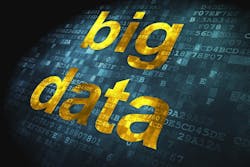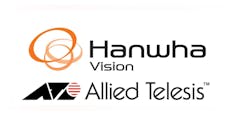No one can disagree that we are living in a world where “big data” has reached a point of critical mass. The ability to record, store, retrieve and analyze data is quickly undergoing a revolution. Walmart alone produces over 2.2 Petabytes of transactional data each day. But the “biggest” big data is undeniably recorded video, at over 400 Petabytes created and stored daily.
This revolution is paralleled by a convergence of video security and big data analytics. Recent advancements in compression technology, storage cost reductions and computer processing speeds means that retail businesses can leverage big data analytics with everyday processes. One of the limitations of traditional big data solutions is a lack of contextual data - only video can provide the context needed to advance these solutions. And, with video being the most context-rich form of data, managers and executives have begun to ask: How can we combine video and big data analytics to help answer real-world business problems and gain actionable insights?”
Retailers now have access to a multitude of easy-to-use tools for data search, mining and visualization. Every manager should now be thought of as a data scientist, able to decipher data with an eye for patterns and outliers. They are enabled to look for patterns and trends in data so they can better protect the business from shrink, invest smartly in new marketing campaigns, and find ways to improve operations to increase the business’ bottom line.
When we refer to enterprise data, we are not only talking about surveillance video, but a host of other recorded and stored transactional systems. These systems can easily be integrated to provide a more holistic view of what is happening on the retail floor at any given day and time. The process of answering business questions with this new form of informational gathering and analysis is referred to as contextual analytics.
Contextual analytics translates relevant frames of surveillance video and other data sources into meaningful and accessible information that can improve security and assist management in making more analytical-based business decisions. It is the process of analyzing the actions of a particular person, place or event and converting that understanding into an opportunity. With the daily application of contextual analytics, retailers can expect more accurate reporting, operational improvements and accelerated workflows.
Making use of existing streams of data without investing heavily in new hardware and technology is an on-going challenge for many business owners. Hosted video and data management solutions have exceeded this demand with simple centralized platforms that easily integrate with legacy or existing DVR/NVR technologies. Contextual analytics is for the first time utilizing video and enterprise data as both an investigative and strategic business-planning tool for managers and executives in retail.
For example, retailers have several streams of daily-recorded data that can be infused to create both a visual and transactional dimension. These include surveillance cameras, point-of-sale (POS) systems and sensors. If the data shows that an item was refunded, but the surveillance video does not detect customer presence during the transaction, then you may have uncovered a form of employee fraud.
The retail industry is beginning to utilize contextual analytics to combat internal and external shrink, and to improve marketing efforts. In-store video surveillance has long been a valuable tool in tracking customer traffic and movement, but couple that imagery with event data - inventory, loyalty card, transactional and POS, and you have significantly increased the value of data from an existing business expense.
Video, even at the highest resolutions, is focused on quality, clarity and storage. Leveraging event-driven analytics ensures that you identify and are notified on important events, and allows you to capture the best picture when these meaningful events occur. A business can use that combined transactional and video event data to track customer movement and employee actions to ultimately improve customer service and employee productivity.
There are a lot of technologies in use today to help manage point-of-sale and public interaction locations - facial recognition, programmed event or activity alarms, inferred monitoring, perimeter tracking, shipping GPS, license plate magnification, access control devices, and emergency service sensors.
Separately, all of these advancements provide an enormous amount of valuable and timely business information. However, when combined under a contextual analytics program, you have a powerful business tool that can both resolve problems and predict future business activities. It is also an essential program for multi-unit retailers as it can manage distributed data sources from a single centralized platform.
Contextual analytics technology is already in use in the retail markets, but has a largely untapped potential in other industries, such as transportation, healthcare, manufacturing, food service, and other market segments where data inundated businesses are struggling with managing multiple big data sources. Combining these types of disparate data sources is the next evolution in business intelligence, getting there first is where contextual analytics can help.
About the Author: Mike Matta is co-founder and CEO of Solink based in Ottawa, Canada. Solink has introduced an analytics platform that works with legacy and current multiple data stream intelligent systems. Matta has a long history in the creation and implementation of data analytical products and services.


